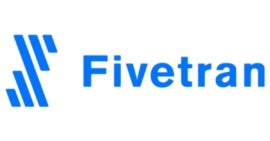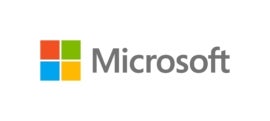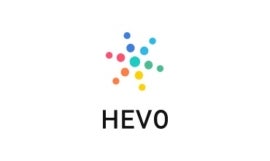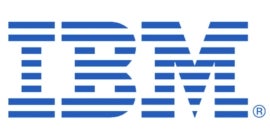
If you need to move, convert or migrate your data, you’ll need the right tools for the job. Here are the top picks for your data migration needs.
As your technology and data use cases evolve, so too do the complexity and volume of data that you store, process and share. In many cases, your legacy data storage systems and applications cannot handle this increased volume while simultaneously ensuring your data is secure and accessible.
The solution that many businesses are turning to is migrating data to more advanced and high-capacity storage setups, but with so many different types of files, formats, devices and systems involved in the transfer process, many businesses hesitate to get started with a data migration plan.
SEE: Check out TechRepublic Premium’s data migration testing checklist for pre- and post-migration.
Although data migration is often a grueling, tedious and time-consuming process, with the right data migration tools at your disposal, it doesn’t have to be. Data migration tools can automate various data migration and management workflows, offer self-service interfaces to your team and provide other features that make the data migration process more secure and seamless. In this guide, we cover some of the top data migration tools for businesses of varying sizes and backgrounds.
Jump to:
| Software | Best for | Data quality assurance | Connection with multiple data sources | Pricing |
|---|---|---|---|---|
| AWS Database Migration Service | Features and advanced functionalities | Yes | Yes | Varies based on size of data |
| Fivetran | Automated data migration | Yes | Yes | Pay-as-you-go pricing |
| Microsoft Data Migration Assistant | Data warehouse data migrations | Yes | Yes | $0.37 per hour for 4-vCore |
| Dell EMC Intelligent Data Mobility | Data migration to new storage | Yes | Yes | Custom pricing |
| Hevo Pipeline | Integration with various data sources | Yes | Yes | $239 per month, billed annually |
| Integrate.io | Prioritizing quality support over cost | Yes | Yes | Starts at $159 per month per 5 million rows when billed annually |
| IRI NextForm | File conversion and legacy data type translation | Yes | Yes | $1,000 for a current, permanent single-PC version without support |
| Stitch Data | Ease of use | Yes | Yes | Starts at $100 per month for 5 million rows |
| IBM Informix | Real-time analytics | Yes | Yes | $1,310 per instance |
| Matillion | Flexible deployment | Yes | Yes | $2 per credit |
Amazon Web Services offers a variety of data migration tool sets, but one of its standout service tools is AWS Database Migration Service. The service allows you to migrate different types of workloads — applications, websites, databases, storage setups and physical or virtual servers — as well as data centers from an on-premises environment, hosting facility or another public cloud environment to AWS.
With this tool, your source database stays active throughout the migration. This reduces downtime for apps that depend on the database and allows you to migrate the database quickly and securely. Furthermore, this service can transfer data to and from the most commonly used commercial and open-source databases.
SEE: Read our full review of AWS DMS.
AWS DMS has both free and paid plans. The Free Tier includes up to 750 hours of Single-AZ dms.t2.micro instance usage each month for one year.
The paid plan is available in the following tiers:
These rates are not cast in stone; the actual price you will pay for AWS DMS will vary based on the size of the data you are migrating. You can also use the AWS pricing calculator for DMS to create your custom estimate.

Fivetran is a cloud-based ETL data migration tool that lets data engineers spend more time generating insights and less time on tedious engineering tasks. With connectors that deploy in a few minutes, automatically adapt to source changes and require zero maintenance, Fivetran simplifies data migration by automatically taking care of all data integration tasks.
In addition, it enables users to centralize and streamline their data operations, including database and application integration, process orchestration and metadata management.
SEE: Read our full review of Fivetran.
Fivetran offers a usage-based pricing model, meaning you will only pay for the monthly active rows (MAR) you use each month. It offers a 14-day free trial, allowing you to try the tool before making a purchase decision.
Each plan offers a 14-day free trial, allowing you to try the tool’s features and functionalities before making a purchase decision.

Data Migration Assistant, or DMA, is a tool from Microsoft that enables you to upgrade your database schema and data from a source SQL Server environment to a target SQL Server environment. With this migration tool, you can move schema, data and uncontained objects from your source server to your target server.
The best part about using this tool is that it will help you identify compatibility issues that may impact functionality in your new SQL Server database version. DMA automates database migration, while simultaneously maintaining minimal downtime. It also provides support for Microsoft SQL Server, MySQL, PostgreSQL and MongoDB migration to Azure from on-premises and other cloud environments.
The tool is available in two versions:
You can use the DMS Premium 4-vCore for free for 6 months or 183 days before incurring any charges. Your free usage time is calculated from the DMS service creation date.

With Dell EMC Intelligent Data Mobility, users can manage workloads and data migration by leveraging technology, automation and Dell EMC expertise.
This solution is built on modern architecture that delivers a flexible design. It also integrates seamlessly into current business needs, with comprehensive coverage from capture to consumption. This provider’s methodology is built around three pillars: discovery, planning and execution.
The pricing for this product is not publicly advertised on the vendor’s website. Buyers are encouraged to contact the vendor for a custom quote.

Hevo is a cloud-based, no-code data migration platform that simplifies migration from legacy platforms to modern data storage solutions. Users can replicate data from over 150 connectors and migrate it into databases, data warehouses and other analytic tools such as Hadoop, SQL Server and Amazon Redshift.
Hevo specifically allows you to preload transformation and overrides auto schema mapping. With this feature, you can leave the app to do its own tweaking to get your data ready for migrations. With a suite of features aimed at speeding up your processes and saving time, Hevo also allows you to monitor your workflow to resolve any issues before they disrupt business operations.
SEE: Read our full review of Hevo.
Hevo Pipeline offers three pricing tiers. The amount you will pay depends on your desired features and the number of events.

Integrate.io is a data migration tool that provides users with a single interface for migrating, transforming and managing data between different applications. This tool helps organizations integrate, process and prepare data for analytics in the cloud. The solution is scalable and cost-effective, with an intuitive interface and a highly automated workflow.
Integrate.io’s ease of use enables users to focus on their business without worrying about the complexities of data migration. Integrations are available via REST API or direct FTP uploads to make it possible for even non-technical personnel to work seamlessly with their technology stack while using this tool.
SEE: Read our full review of Integrate.io.
The amount you will pay for this tool depends on your selected plan and desired features.
ETL and Reverse ETL
ETL and CDC
Pricing for this plan varies based on your data management needs.
DWH Insights

IRI NextForm is a data migration tool built on Eclipse. This tool can migrate, reformat, convert, replicate, federate and report data from one system or format to another. In addition, it can move information from legacy systems into new environments and upgrade old database engines and other components that may not have native export capabilities.
SEE: Read our full review of NextForm.
This tool’s pricing depends on the edition you need:

Stitch Data from Talend is an ETL tool that helps you transform, cleanse and prepare your data so it’s ready for analysis. Stitch can also extract and load structured or unstructured data from various sources, like databases and spreadsheets.
With these capabilities, you can execute your analytical workflow with a single tool. With its diverse connectors, Stitch provides customers with an easy way to migrate their complex databases without coding.

IBM Informix is a Data Migration solution that works with SQL commands and migrates data from one IBM Informix database or operating system to another.
Integrating SQL, NoSQL, JSON, time-series and geographic data is made simpler with IBM Informix’s migration tool. It also has an intuitive GUI that simplifies workflows, allowing users to migrate data between various database types and platforms.
SEE: Read our full review of IBM Informix.
The following is the IBM Informix on cloud pricing. Contact the vendor for on-premises pricing.

Matillion is a cloud-based ETL solution that enables you to migrate data between systems, databases and platforms. This tool primarily lets you load, transform, sync and orchestrate data in a centralized location with built-in analytics capabilities.
In addition, Matillion allows users to sync data back to business and operational applications through reverse ETL with pre-built connectors. They can also manage complex pipelines through a single dashboard and customize ETL for organization-specific infrastructure.
Matillion offers three pricing plans with different features:
Data migration is the process and strategy for transferring data from one system, database or storage device to another environment or setup. It can be used in various situations, such as when new hardware needs to be set up and old hardware needs to be decommissioned or when a company is working to move all of its workloads to the cloud.
SEE: Explore these best practices to follow for data migration.
In addition, when upgrading to new software versions, companies will often migrate their existing data to continue using it in their new environment without rebuilding everything from scratch.
There are many factors to consider before deciding which tool to use for your data migration project, but here are some key features you should look out for.
A good data migration tool will allow you to migrate from multiple sources and destinations simultaneously, saving time when setting up new connections and users. It’s also helpful when migration software is integrated with various cloud storage providers, such as AWS S3 or Google Cloud Storage, so it’s easy to switch between providers if you use them for backup purposes.
Legacy systems have their own formats and schema that don’t always translate well to new destination formats. Thus, it’s essential to have an easy way to convert those old data formats into what is needed for the new system. The best data migration tools provide plug-ins or modules that easily convert those files into the necessary formats while keeping all the original content available and secure.
Some companies use third-party products, like SharePoint to store documents or Outlook as an email client, but these products may not work well if your organization chooses to migrate away from Office 365. To make this transition easier, find a tool with integration capabilities that span across product suites and solutions that are most important to your business.
With many data migration solutions, it’s common to join a long waitlist before your data gets migrated. However, with self-service deployments, customers can set up the task and workflows themselves by downloading the application and following a series of steps.
SEE: Check out this guide to the roles and responsibilities of the data migration team.
More complex data migrations may not be a good fit for self-service migrations, but regardless, it’s still important to find a vendor that offers the right amount of flexibility and access for your team.
Data migration involves moving vast amounts of data and often includes complex processes. It’s a good idea to find a tool that offers an automated workflow to streamline those processes. To ensure the integrity of your data, it’s recommended to automate your data migration testing process.
Auto-detection of missing items saves valuable time when dealing with an extensive database or repository. This means that when something goes wrong — like you accidentally deleted a row of data — the program will detect this error and pause the entire process as soon as possible.
Scalability is a major perk of data migration tools. It can take from a few weeks to even months to scale a physical infrastructure up or down. A cloud-hosted data migration tool can be scaled up or down, depending on your requirements, in minutes or hours. This saves you both time and money.
Data migration tool providers invest significantly in their software security to ensure the safety of their customer’s data. These tools are also built to comply with various regulatory and privacy standards, including SOC 2, HIPAA, ISO, GDPR, CCPA and others. This allows you to share your security burden with your data migration tool provider.
It is expensive to build a data migration solution that can process large volumes of data. Most cloud providers offer usage-based pricing, which means you will only pay for what you use — this can be a significant cost saver.
In the case of a self-created and self-managed data migration tool, you may spend more adding new features as your data needs increase; with a cloud provider, you can simply scale up to meet your needs during peak periods and scale down as needed.
Data migration software analytics capabilities provide users with insights that can be used to make informed decisions about their business, products or service delivery. This will help steer the company in the right direction, optimize operations and improve customer experience.
In order to choose the right data migration tool, you need to consider your business-specific needs and how much time and resources it will take for your organization to perform the necessary migration tasks. It is also important to remember that some tools can only be used on one type of device, while others can work across all kinds of platforms. A comprehensive tool that supports all platforms is ideal if you’re migrating a mixed environment of server, desktop and mobile device data sources.
SEE: Use this data governance checklist from TechRepublic Premium for your organization.
As far as pricing goes, it usually depends on the number of users in your company and whether you want to use an online or offline solution. Other factors to consider include the file formats you plan to migrate as well as bandwidth constraints. TechRepublic recommends that you shop around and compare products before making decisions. Most importantly, read customer reviews for each product to determine what works for your specific line of business and data needs.
We researched hundreds of data migration tools and narrowed down our list to the best 10 in 2023. Our top picks balance quality service, with moderately expensive or affordable pricing and offer value for money. We gathered primary data about each data migration tool from the vendor’s website.
We also analyzed users’ feedback on reputable review sites like Gartner Peer Insight to learn about current and past users’ experience with each tool. This data was used to create each data migration software product overview; determine what and who each tool is best for; and learn about their features and functionalities, pricing, strengths and weaknesses.
Read next: Explore our list of the top data integration tools.